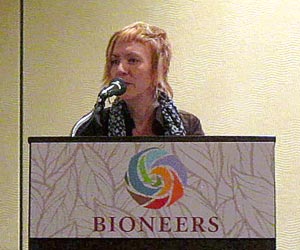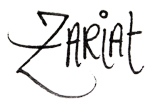‘Festival Culture’s Hidden Activism’ Presentation at Bioneers
Today i had the honor of speaking in Marin, CA at the renowned Bioneers festival, joining a group of friends and colleagues to discuss the ‘hidden activism’ in festival culture:
The Children of Bacchus and Bucky: Festival Culture’s Hidden Activism
While thousands more people flock to festivals such as Burning Man and Boom every year, activists find engaging the younger generations in social and environmental work challenging. This panel of artists and producers who span the festival/activist divide will use words, art and performance to explore a paradox: Can “festival culture” be both narcissistically self-expressive and serve as a social laboratory for radically transformative ideas, relationships and technologies? Are festivals the opiates of the modern young masses, or inspiring harbingers of a better world?Hosted by: Eve Bradford, writer, producer, performer
Featuring: Jen Zariat, co-founder of Symbiosis Events; Jesse Fleming of The DoLab; Carey Thompson, Acting Art Director of Boom Festival; and Isis Indriya of the Oracle Gatherings.
 Having previously worked with each of my co-panelists on events in the past, i was especially enthusiastic about today’s discussion. This was a unique opportunity to share what we have each learned over the years and present our ideas for discussion in a public forum.
Having previously worked with each of my co-panelists on events in the past, i was especially enthusiastic about today’s discussion. This was a unique opportunity to share what we have each learned over the years and present our ideas for discussion in a public forum.
In my presentation, i discussed the timelessness of festival culture and how it is an intrinsic feature in the human experience as evidenced throughout history.
From my talk:
We are in the midst of a “Festivolution” – people today are seeking more reasons for celebration in their everyday lives, and deeper meaning in these celebrations. Despite the global recession, the poorest people in the world are currently spending the greatest percentage of their income on festivals, according to a recent study.
The largest festival in the world is India’s Kumbh Mela, which has drawn as many as 60 million people [in 2001] to the Ganges river for ritual bathing every 3 years for centuries. For comparison, Woodstock was about 500,000 people, Burning Man was over 50,000 in 2011, and my own festival, Symbiosis Gathering, had over 5,000 guests in 2009. Burning Man sold out of its permitted ticket allotment for the first time this year, and Symbiosis Gathering doubled in size at every event since its inception in 2005.
Festivals in the United States and across the world are growing in size and popularity, and with this growth comes both great power and grave responsibility.
When people come together, their energies merge into a dynamic force, both physical and ideological, with the potential to institute great change. For this reason, gatherings of the people have been both revered and feared by governments and leaders throughout the ages for their ability to converge the masses and catalyze action.
Since the time of Bacchus himself, and long before, festivals have represented a spectrum from humanity’s lowest debaucheries to its highest ideals. Each event draws its audience and leaves its historical mark based largely upon where on this spectrum it lies.
I responded to the continually relevant question of a festival’s primary functions and responsibilities to the greater community, and i presented my perspective on how these goals have been addressed in the events in which i have been involved:
What is the ‘conscious creative’ culture?
If we were to define it in marketing terms, we’re talking about the LOHAS demographic – LOHAS stands for Lifestyle of Health and Sustainability. More than just this, though, we are talking about people who value art, and creative expression, as vital components of a happy and healthy life. There is often a strong sense of a global ‘community’ amongst people practicing these ideals, and gatherings around the world are often based on the creative arts – most frequently, music – but also embody the lifestyle ideals and ethics to varying degrees.
In the seven years i spent producing Symbiosis Events, i discerned what i see as three primary goals of a ‘conscious’ community gathering, expressed through five primary elements of ideology and structure.
The Three Goals of an Event Are:
- To Encourage the Development of Personal Responsibility
- To Facilitate Community Empowerment
- To Support Responsible Environmental Stewardship
These are the primary functions and actually, responsibilities, of the event, on a macroscopic level, as i see it.
Quantifying results is no easy task, but there are some visible measures by which i can judge an event’s effectiveness at these goals. For example, how much trash is left behind afterward? What kind of response from the community comes out in the social media? What kind of language do people use when describing the event? How well-attended were the educational presentations? I encourage you to look for these yourself at the next event you attend, and discuss them with your friends. Communication amongst people within a community is the most potent catalyst for positive growth.
I went on to discuss about the specific elements of a festival, and the ways in which they each contribute to the event’s overall success or failure. In the end, however, questions still remain.
What have we learned from the traditions of the past? How will we create our own sustainable traditions, and what will be our legacy to the generations of the future?
The answers unfold and evolve at every event, and each of us is a unique and critical piece of the puzzle. My personal and sincere hope is that we, both as individuals and as a global community, can rise to the challenge of creating reality from the visions of our highest ideals.
